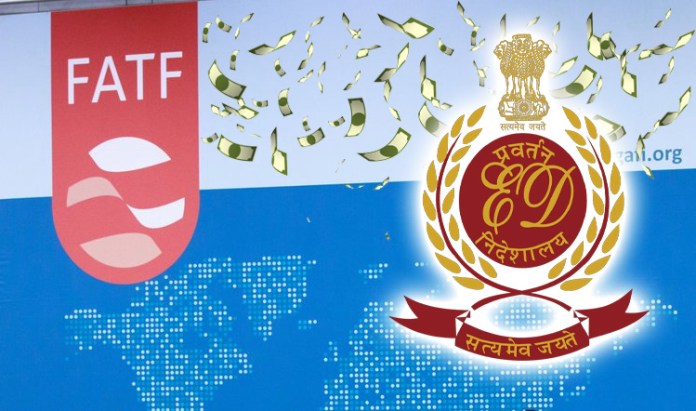The world’s main watchdog for fighting financial crime, the Financial Action Task Force (FATF), has just rolled out a major new guide for all countries. This new rulebook, called the “Asset Recovery Guidance and Best Practices,” is a really big deal because it’s the most significant update in over thirty years on how to track down, freeze, and return money stolen by criminals.
FATF highlights India's good practices in asset recovery; ED's work featured prominently
Read @ANI Story | https://t.co/IWcBDA9E6u#FAFT #ED #India #AssetRecovery pic.twitter.com/66KlwFdpUg— ANI Digital (@ani_digital) November 5, 2025
The main goal is to make it much harder for criminals and money launderers to keep their illegal wealth. In a strong endorsement of India’s recent efforts, the FATF has pointed to the country, especially the work of the Enforcement Directorate (ED), as a shining example of how to get this job done right.
India wasn’t just a bystander in this; it was a key player in creating these new global standards. The Enforcement Directorate said its officers played an active role in the technical work and negotiations over the past two years, helping to draft the very rules and guidance that will now be used worldwide.
This shows that India’s methods for catching financial criminals are being recognised as top-tier on the global stage. The FATF is essentially using India’s investigative templates as a model for other countries to follow, highlighting the strength of India’s anti-money laundering framework.
One of the biggest changes, and a real landmark shift, is a new rule that the FATF is pushing. It now mandates that countries must have systems to recover stolen assets even without a criminal conviction. This is a game-changer for cases where a trial isn’t possible, perhaps because the criminal has fled the country.
The new guidance includes powerful tools like non-conviction-based confiscation and unexplained wealth orders, which allow authorities to go after suspicious wealth much more aggressively.
The FATF report specifically praised India’s own laws, which are already doing what the new guidance suggests. A key law that was spotlighted is the Fugitive Economic Offenders Act of 2018. The FATF called this a “global benchmark.”
This law gives Indian authorities the power to seize the property of offenders who run away from the country to avoid facing trial. India’s main law, the Prevention of Money Laundering Act (PMLA), was also recognised as a comprehensive model for successfully recovering assets.
To prove these methods work, the FATF packed its new guide with real-life case studies from India. One massive case was the Agri Gold investment fraud, where coordinated action led to the attachment of ₹60,000 crore to be restored to the victims.
In another case involving the IREO Group, authorities attached ₹1,777 crore in properties, an example of value-based confiscation to cover money transferred abroad. The report also showed how India is tackling modern digital crimes, like in the BitConnect crypto scam, where the ED seized ₹1,646 crore in crypto. In the Banmeet Singh drug trafficking case, India worked with the U.S. to seize 268.22 bitcoins worth ₹1,300 crore.
A major theme in the new guidance is making sure victims get their money back, and India was again used as the model. In the Rose Valley chit-fund case, assets worth ₹538 crore were returned to over 75,000 investors. Similarly, in the Pen Urban Co-op Bank fraud, ₹290 crore in attached assets were transferred to compensate depositors.
By showcasing these successes, the FATF has clearly recognised India’s growing leadership in building a system that not only catches criminals but also delivers real justice to their victims.

